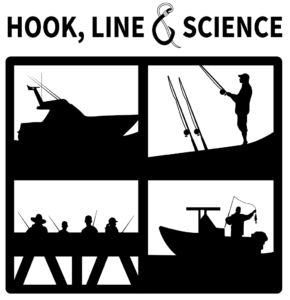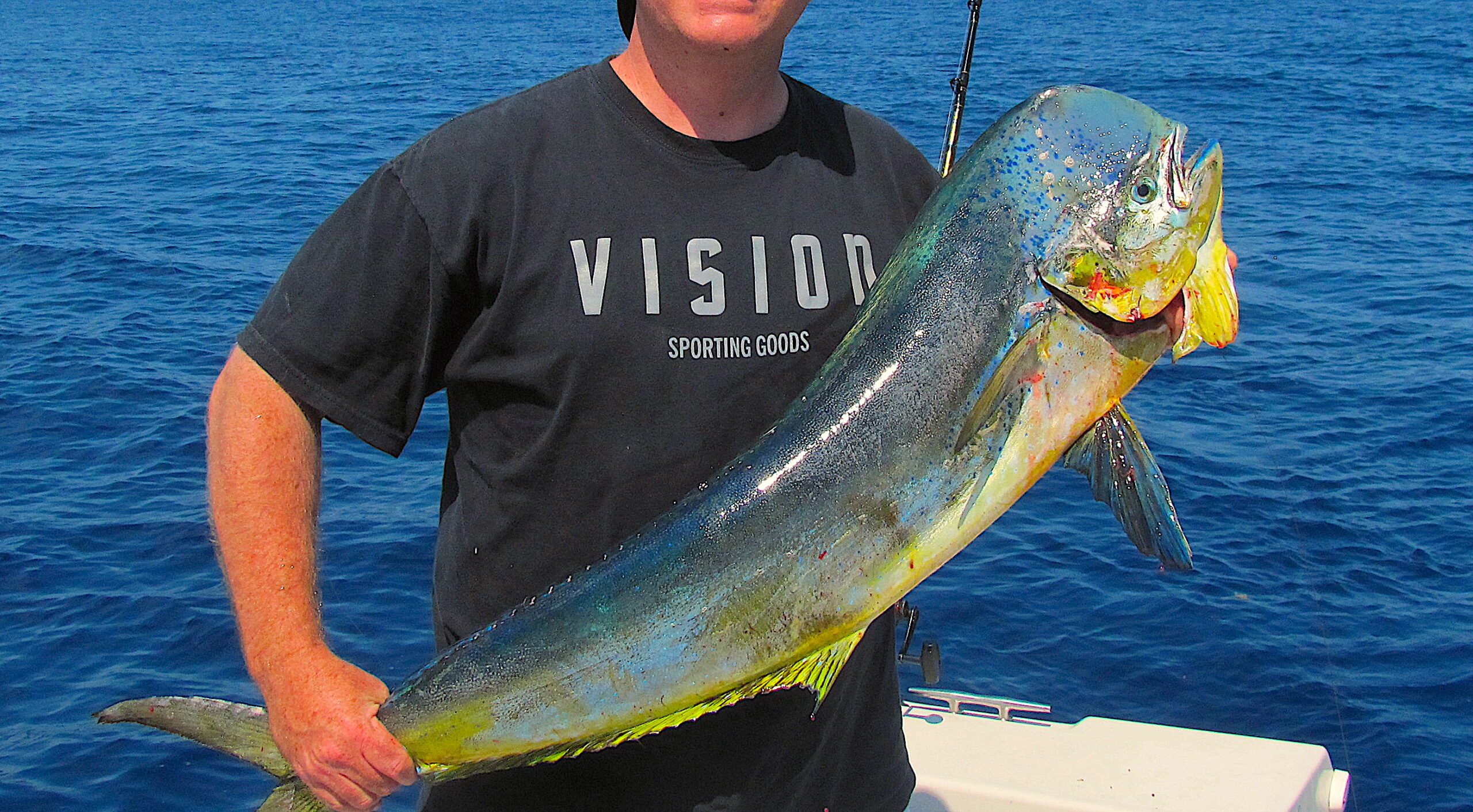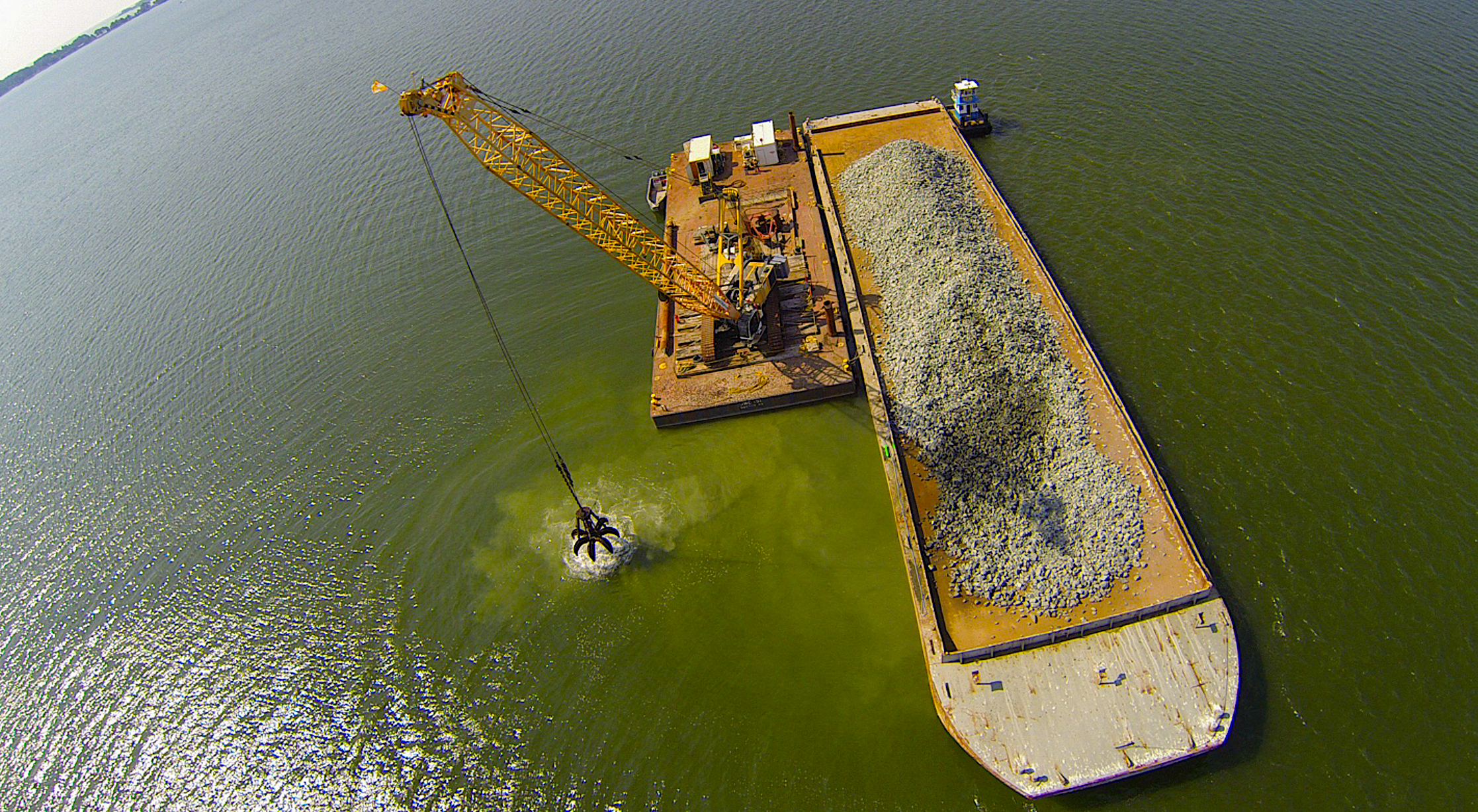Two decades of fishing data raise concerns about this offshore favorite.
Research Need
Dolphinfish, also known as mahi-mahi, are a prized catch among those recreational anglers looking to reel in exceptionally large, trophy-sized fish.
However, a recent study revealed a steady decline in the size of dolphinfish at two major North Carolina fishing tournaments — the Big Rock Blue Marlin Tournament and the Hatteras Village Offshore Open. At Big Rock, the average length of male dolphinfish decreased by 6.6 inches from 2003 to 2023, while female lengths dropped by nearly 14 inches. The Hatteras tournament showed similar trends, with smaller but still significant declines.
But does catching smaller fish mean there are fewer large fish available?
The answer may lie in the number of angler trips it takes to catch an exceptionally large dolphinfish.
What did they study?
Researchers from NC State University, The Nature Conservancy, and the NC Department of Environmental Quality analyzed recreational fishing data from North Carolina between 2000 and 2023. They used records of dolphinfish (weighing 35 pounds or more) from the North Carolina Saltwater Fishing Tournament, also known as the Citation Program. They combined this citation data with annual estimates of offshore recreational fishing trips from a federal survey program.
By dividing the number of angler trips by the number of dolphinfish citations, researchers calculated how much effort it took to catch one large dolphinfish. To help account for other factors that might affect citation rates or angler behavior — such as the popularity of the Citation Program or changing availability of official weigh stations — they ran the same analysis for wahoo, an offshore species that cohabitates with dolphinfish and that anglers commonly catch on the same trips.
What did they find?
The Citation Program awarded 4,619 dolphinfish citations from 2000 to 2023, with a high of 459 in 2001 and a low of 53 in 2023.
The number of trips required to catch a dolphinfish weighing at least 35 lbs. nearly quadrupled from 2000 to 2023. In 2000, landing a citation-sized dolphinfish took, on average, 1,853 angler trips, but by 2023, that number had risen to 9,701 trips.
In contrast, the research team found no trend for wahoo, suggesting that a decline in the number of large dolphinfish — rather than other factors — is why it takes more trips on average to catch one.
What else did they find?
The timing of dolphinfish citation catches shifted less than four days over the 24-year study period. This small change suggests that migration patterns have not significantly changed and are unlikely to explain the declining numbers of large dolphinfish.
Incidentally, researchers found nearly identical results for dolphinfish and wahoo citation catches from for-hire trips.
So what?
The sharp rise in effort needed to catch large dolphinfish, combined with other research showing declines in both commercial and recreational catches in the region, indicate the declining health of this stock. Because larger individuals produce more offspring, they play a crucial role in sustaining the species. Targeting these large, reproductive fish can hinder the stock’s ability to recover, raising concern about the health of the dolphinfish population.
These findings offer timely insight for fishery managers as they consider new conservation measures like size and bag limits.
Reading
Runde, B. J., Rudershausen, P. J., & Stilson, G. R. (2025). Evidence for declining numbers of large Dolphinfish in the western North Atlantic. North American Journal of Fisheries Management, 45(1), 169–175. https://doi.org/10.1093/najfmt/vqaf007
Lead photo (edited): dolphinfish, caught off the coast of Hatteras Island. Credit: Qbx101/CC BY-SA 3.0. CreativeCommons.org.
The text from Hook, Line & Science is available to reprint and republish at no cost, but only in its entirety and with this attribution: Hook, Line & Science, courtesy of Scott Baker and Sara Mirabilio, North Carolina Sea Grant.

- Categories:




